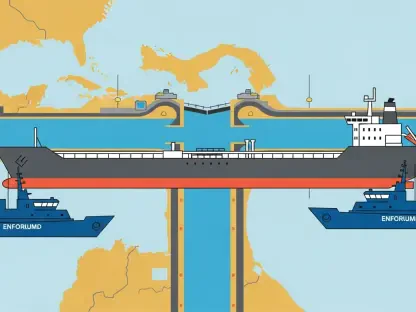A surge of courtroom challenges has recast climate accountability as a matter of constitutional duty rather than policy preference, and the most consequential actions are increasingly unfolding in state courts where environmental protections are written into governing charters. The shift is epitomized by a Diné-led case out of New Mexico that converts lived damage—air thick with emissions, water fouled by spills, and cultural lifeways under pressure—into claims of state neglect. The approach is straightforward yet disruptive: if a constitution charges a government with safeguarding natural resources, then oversight cannot be symbolic and permitting cannot be automatic. That premise has begun to resonate in jurisdictions that recognize enforceable environmental rights. It has also sharpened a debate over what remedies courts can order when agencies lack staff, data, or leverage to rein in chronic pollution linked to fossil fuel growth. The result is a fast-evolving map of wins, losses, and test cases with national implications.
From Greater Chaco to the Courtroom
In the Greater Chaco Landscape of northwest New Mexico, the fracking boom that arrived near Counselor in 2015 coincided with a stark transformation of daily life for nearby residents. Diné community members recorded oil spills measured in thousands of gallons, described soils that no longer absorbed water as before, and watched medicinal herbs and forage plants decline where wells and roads multiplied. Constant traffic, compressor noise, and flares reshaped the soundscape; haze and odors, they said, became routine. Those accounts form the backbone of a lawsuit led by Mario Atencio, who situates environmental harm alongside cultural loss at his grandmother’s homestead. The claim is not only about contamination but also consent. Plaintiffs argue that development advanced without free, prior, and informed consent of affected Indigenous residents, amplifying health risks while eroding traditional practices tied to specific plants and places.
The narrative extends beyond individual harms to a pattern of decision-making that plaintiffs say prioritized output over safeguards. According to their filings, state agencies issued drilling and fracking permits with little site-specific analysis and limited public participation, particularly for non-English-speaking households. They also emphasize cumulative effects, noting that emissions from thousands of wells and associated infrastructure add up to ambient air that already breaches federal standards in parts of the region. This cumulative framing is strategic: it recasts discrete spills and leaks as symptoms of a permitting and oversight system that fails to control known risks. By grounding legal arguments in observed damage—dead livestock, respiratory symptoms, lost access to plants used for ceremony and healing—the case seeks to show that constitutional duties attach not only to wilderness or parks but to lived-in landscapes where health, culture, and resources are inseparable.
Constitutional Duty in New Mexico
Atencio v. State of New Mexico turns on the meaning of a 1971 constitutional amendment directing the state to control pollution and prevent despoilment of air, water, and natural resources. Plaintiffs argue that this language imposes an active duty: the government must regulate, monitor, and enforce in a manner commensurate with the risks, much as it must fund and manage public education to fulfill another constitutional mandate. The New Mexico Supreme Court agreed to hear the case, an early signal that the questions it raises are not merely political. The filings recount enforcement deficits that, in the plaintiffs’ view, convert a lofty promise into a paper shield. They contend the state cannot satisfy a constitutional requirement by rubber-stamping permits while limiting oversight to industry self-reporting and sporadic checks across a vast oil and gas estate.
The lawsuit catalogs those gaps with granular detail. In 2023, by one tally, the New Mexico Environment Department had two full-time inspectors covering roughly 56,000 facilities, a ratio that invites underreporting and delay. Plaintiffs cite methane releases documented by community members, including Diné plaintiff Kendra Pinto, as instances where regulators missed, minimized, or belatedly addressed violations. Attorney Gail Evans frames the issue as a neglected public duty: without adequate staffing, baseline monitoring, and clear rules, the system defaults to permissive permitting even when air quality in the Permian Basin exceeds federal thresholds. The requested remedies include targeted measures—tighter setback requirements, continuous emissions monitoring, closure of loopholes that exclude smaller sources from oversight—and structural reforms, such as funding mandates, that align agency capacity with constitutional obligations.
State Courts as the New Climate Battleground
The New Mexico case sits within a larger strategy that has moved climate accountability into state forums with explicit environmental rights. Youth and Indigenous plaintiffs have notched notable wins, including Held v. Montana, where a court recognized that policies facilitating greenhouse gas emissions infringed on a constitutional right to a clean and healthful environment. In Hawai‘i, young Indigenous advocates prevailed against the transportation department by arguing that highway expansion undermined statutory decarbonization commitments. These decisions signal that where constitutions or laws impose affirmative duties, courts may require governments to do more than gesture at climate goals. Yet outcomes vary. Alaska’s Supreme Court in Sagoonick rejected public trust arguments that sought to tether climate stability to general resource protections, illustrating how textual differences and judicial philosophy drive divergent results.
Federal courts, by contrast, have proven reluctant to order systemic change. In Lighthiser v. Trump, a judge acknowledged the reality and harm of climate change but dismissed the case on separation-of-powers grounds, holding that broad policy redirection falls outside judicial authority. The distinction is structural: the U.S. Constitution constrains government action but does not explicitly confer environmental rights, while many state charters do. That divergence pushes litigants toward state courts, where judges may view environmental clauses as enforceable mandates. Industry groups counter that aggressive judicial remedies threaten economic stability and energy security, warning of job losses and revenue declines. Plaintiffs respond that constitutional duties are not contingent on commodity cycles and that public health and cultural integrity cannot be balanced away. The New Mexico ruling, regardless of direction, has been poised to clarify those boundaries and to guide permitting and enforcement across major producing regions.









